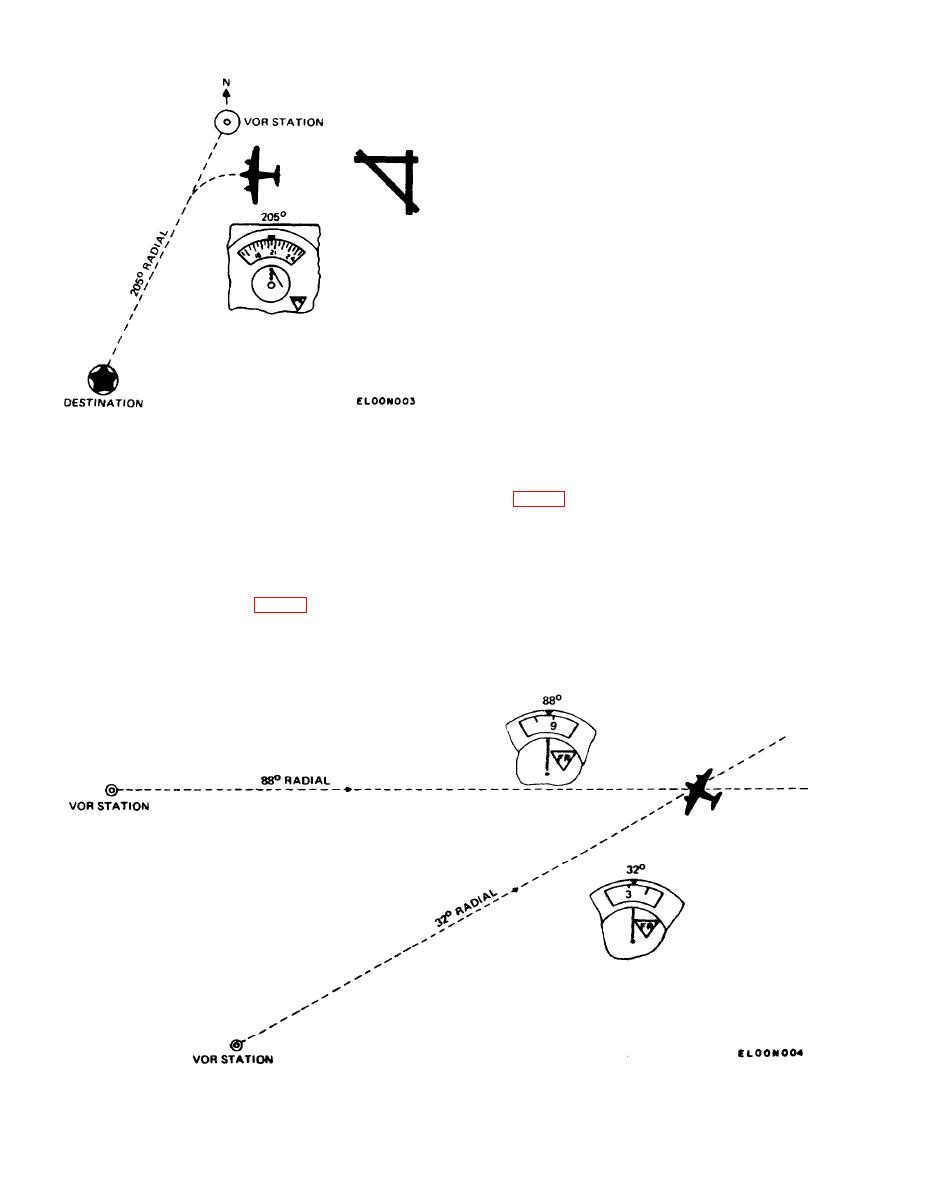 |
|||
|
|
|||
|
Page Title:
Figure 2-2. Position Finding With VOR. |
|
||
| ||||||||||
|
|  TM 11-5826-258-24
finally it is impossible to use this method when the sta-
tions are 0 or 180 apart (are in line with the air-
craft). The aircraft position is determined as follows:
(1) Tune the navigation receiver to one of the sta-
tions.
(2) Rotate the course card until the VOR/localizer
needle is centered and the to/from indicator FR. Read
the bearing beneath the course index, which in the fig-
ure 2-2 example is 88 0. This is the bearing from the
station to the aircraft.
(3) Locate the station on a map and draw a line
from the station in the direction determined in (2)
above,
(4) Repeat the procedures given in (l), (2), and (3)
above on a second VOR station (preferably one which
is separated approximately 90 from the first station).
The bearing for the second VOR station read under the
course index is 32
(5) The intersection of the two lines is the aircraft
Figure 2-1. Flying From VOR Station.
position.
to/from indicator (select the inbound radial, not the
e. VOR Approach. The VOR approach is executed
outbound).
when the desired landing runway does not have ILS fa-
(2) Fly in the general direction toward the
cilities but the VOR station is in line with the desired
selected radial; then turn in the direction in which the
runway (fig. 2-3). Proceed as follows
VOR/localizer needle deviates. As the needle centers,
(1) As the aircraft comes within range of the VOR
turn to the heading of the selected inbound radial and
station, set the course card to the specified radial or a
keep the needle centered.
convenient inbound radial (80 radial shown) and tune
d. Position Finding With VOR. When two VOR sta-
the navigation receiver to the VOR station.
tions can be received, the VOR system provides a
(2) Fly toward the desired radial to center the
method of position finding (fig. 2-2). This method is
VOR/localizer needle.
accurate when the two stations are at least 30 apart
(3) When the VOR station is reached, set the
(with respect to the aircraft) and not more than 150
course card to the reciprocal (0 radial) of the final ap-
apart (with respect to the aircraft). At angles less than
preach course. Fly toward the reciprocal of the final
30 and more than 150, the accuracy degrades until
approach course to center the VOR/localizer needle.
Figure 2-2. Position Finding With VOR.
2-2
|
|
Privacy Statement - Press Release - Copyright Information. - Contact Us |